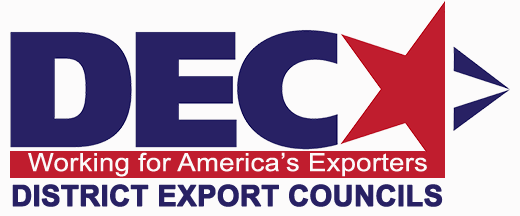Let’s face it, there’s a lot of paperwork associated with exporting. Whenever you sell, ship, or deliver products overseas, paperwork is required to document the process. And initially, this paperwork may seem overwhelming.
 Please read-on, or if you prefer click here for a webinar on the subject.
Please read-on, or if you prefer click here for a webinar on the subject.
For document examples click here.
Keys to documentation success
First, make sure that you can satisfy all the paperwork TERMS. Don’t agree to a TIME SCHEDULE you can’t meet. And, make certain the documents give you enough PROTECTION, with adequate shipping insurance, clear handling instructions, and safe payment terms.
Everything, and I mean EVERYTHING in the documents, must be absolutely consistent, since even slight discrepancies can prove costly. ACCURACY is also paramount, since mistakes in the paperwork can have dramatic and unpleasant repercussions.
Document types and sequence
The paperwork SEQUENCE is fairly logical, and includes:
- Sales documents
- Shipping documents
- Regulatory & compliance documents
- Origin documents
Sales documents show:
- WHO the buyer and seller are
- WHAT they are buying and selling
- WHERE the product is coming from and going to, and of course the
- SALES PRICE
Shipping documents describe:
- WHAT is being shipped,
- SHIPPING INSURANCE the type and coverage
- WHO is responsible for the logistics, and the
- MODES of TRANSPORTATION– land, sea, or air.
Regulatory and Compliance documents
These prove that you have met all the legal requirements of the countries you are shipping from and to. These may include licenses, permits, or safety certificates, etc.
Origin documents
These show where the products were made, and that they are not inferior goods being DUMPED overseas.
All of these documents are discussed in more detail in our two webinars on documentation. You can also download a PDF with samples of the most common shipping documents by clicking here.
Pro-Forma Invoices
Pro-Forma invoices are probably the most important export documents of all. But, unfortunately, the term itself is often misunderstood, because a Pro-Forma Invoice is NOT an invoice at all in the traditional sense. Rather, it is a formal PRICE QUOTATION for export sales, that defines the:
- PRICE of the goods
- SHIPPING type and its cost, and the
- SALES TERMS.
The Pro-Forma is tremendously important document, because it is the original SOURCE from which many of the other export documents are derived.
When should you use a Pro-forma? — ALWAYS! — basically, whenever you’re quoting on an export sale.
A Pro-forma invoice is also very important to your overseas customer. First, it gives them a complete picture of the entire transaction, and if they are paying you with a letter of credit, the Pro-forma gives their bank all of the information needed to draft the L/C (By the way, if you want to know more about letters of credit, you can view our webinar on Payment Terms.)
In some countries, a Pro-forma is required for your customer to secure permission to import your goods. And, finally, some countries also have currency controls, so your customer will need a Pro-forma to get US dollars to pay you.
Before developing a pro forma, you first need to give your freight forwarder some information:
- a full description of the product, including its weight, dimensions, and value.
- the terms of payment, including a signed copy of the purchase order
- a copy if the letter of credit, if that is the means of payment
- the product’s harmonized code(s)
- any special instructions. For example, is the product fragile or susceptible to damage from heat or humidity?
- if you are shipping any hazardous materials.
Once he has all of this information, the forwarder can tell you the shipping costs, the required documentation, and the cost of insurance on the shipment. These are all critical inputs to the Pro-forma.
Your Pro-forma will also need to include some information provided by your bank, including bank service fees and transactional finance charges. To get this information, you need to contact your bank’s international department and ask for a written quotation. You should also ask for a copy of their fee schedule.
A Pro-forma does not have to be in any special format. In fact, you can use your regular invoice form, if at the top of the page you type “Pro-forma Invoice, International Quotation.” — The main thing is that it must contain all of the required information below.
(Click here for export document examples..)
(Click here for our Export Documents webinar.)
